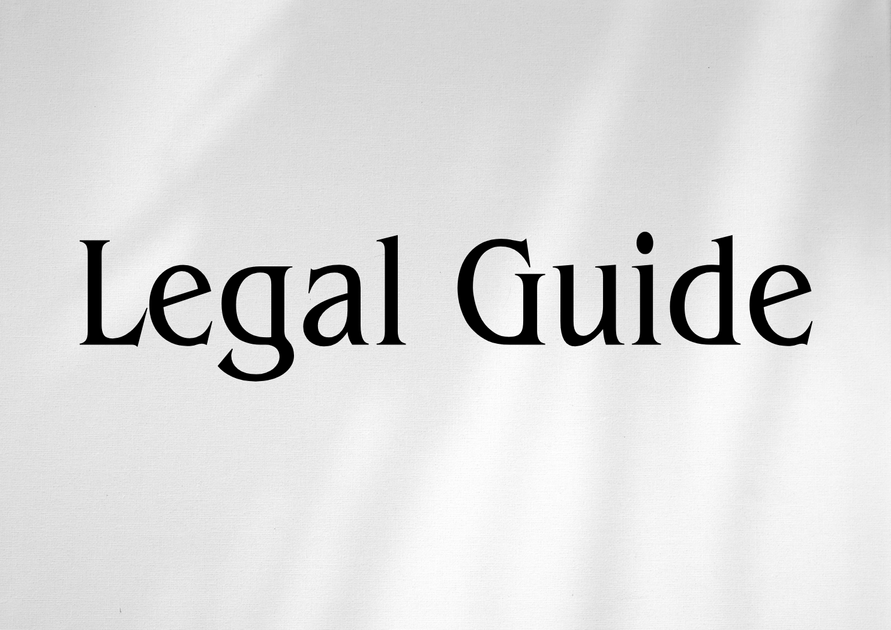Introduction: Navigating Business Harmony in Qatar
In today’s fast-evolving business landscape, the capacity to anticipate and avoid disputes is a powerful competitive advantage. For organisations operating in Qatar—and particularly for UAE-based businesses with cross-border interests—the importance of implementing robust dispute-avoidance practices is heightened by recent legal reforms and increased enforcement of commercial standards. The region has witnessed pivotal updates to civil and commercial regulations, dispute resolution frameworks, and contractual norms, making proactive legal compliance more critical than ever. This article delivers a comprehensive framework for business leaders, in-house counsel, and legal practitioners seeking to fortify their operations in Qatar against disruption, litigation, and reputational risk. Drawing upon the latest regulations, official commentary, and professional insights, we unpack best practices for safeguarding your business from disputes, referencing UAE and Qatari legal structures, and highlighting compliance strategies that set the standard for sustainable regional growth.
Table of Contents
- Understanding the Legal Landscape in Qatar
- Recent Regulatory Updates and Key Comparisons
- Critical Contractual Practices for Dispute Avoidance
- Corporate Governance and Operational Transparency
- Risk Management and Early Warning Systems
- Leveraging Dispute Resolution Tools and ADR
- Compliance Checklist: Practical Steps for Business Leaders
- Case Studies and Illustrative Best Practices
- Professional Recommendations and The Road Ahead
- Conclusion: Safeguarding Business Success in Qatar and the UAE
Understanding the Legal Landscape in Qatar
Legal Foundations and Key Statutes
Qatar’s legal infrastructure is rooted in civil law, inspired by both Shari’a and modern international principles. The commercial sector is primarily governed by key statutes such as the Qatar Commercial Companies Law (Law No. 11 of 2015, as amended by Law No. 8 of 2021), the Qatar Civil Code (Law No. 22 of 2004), and sector-specific regulations for business conduct and contracts. Key regulatory authorities such as the Ministry of Commerce and Industry and the Qatar Financial Centre Regulatory Authority play essential roles in setting standards and resolving disputes.
With the recent regional push for business legal certainty—mirrored in the UAE’s Federal Decree Law No. 32 of 2021 on Commercial Companies and updated Cabinet Resolutions setting compliance frameworks—Qatar is heightening its emphasis on contract clarity, transparency, and dispute prevention. Cross-border businesses must thus align their practices with both Qatari and UAE best standards to safeguard continuity and reputation.
Cross-Border Relevance: UAE-Qatar Legal Interplay
For UAE-based conglomerates or investors managing operations in Qatar, disparities and intersections between Qatari and UAE laws necessitate an astute, comparative approach. For instance, both jurisdictions underline the sanctity of contract, but have nuanced differences in enforcement, liability, and remedies. UAE’s continual updates—such as to Commercial Companies Law and Labour Law (via Federal Decree-Law No. 33 of 2021)—often inspire similar reforms in the Gulf, signifying the importance of regionally harmonized compliance programs.
Recent Regulatory Updates and Key Comparisons
2021-2025: Landmark Changes in Qatari and UAE Law
Qatari law has matured significantly in recent years, introducing modernized procedures for contract drafting, company formation, and internal dispute mechanisms. These developments echo parallel movement in the UAE, notably through:
- Federal Decree-Law No. 32 of 2021 (UAE) – Modernized corporate governance and dispute prevention clauses
- UAE Cabinet Resolution No. 58 of 2020 – Standardized Ultimate Beneficial Owner (UBO) declarations to improve transparency
- Ministerial Guidelines on Mediation and ADR (UAE, 2023–2024) – Encouraging non-litigation dispute mechanisms
Below is a table contrasting recent legal developments in both jurisdictions, highlighting compliance focus areas for 2025 and beyond:
| Aspect | UAE (2021–2025) | Qatar (2019–2024) |
|---|---|---|
| Corporate Governance | Mandatory board committees, fiduciary duty expansions (Decree 32/2021) | Stricter director accountability (Amendment to Law 11/2015) |
| Commercial Contracts | Enhanced enforceability, e-signature legalisation (Decree 32/2021; Civil Code updates) | Greater focus on contract clarity, standard form adoption (Law 22/2004, 2019 reforms) |
| ADR/Mediation | Institutionalisation via Ministerial Guidelines 2023, ADR incentives | Expansion of Commercial Court ADR mandate (2022) |
| Transparency & UBO | Rigorous UBO frameworks (Cabinet Resolution 58/2020) | Beneficial ownership registers required (2019 amendment) |
| Penalties/Sanctions | Harsher civil and regulatory fines for non-compliance | Graduated penalty system, offender publication (2023 update) |
Visual suggestion: Comparative process flow of dispute resolution in UAE vs Qatar (showing stages and options).
Critical Contractual Practices for Dispute Avoidance
The Art and Science of Contract Drafting
At the heart of most business disputes lies ambiguity or omission in contractual documents. Both Qatar and the UAE have increasingly prioritised plain-language contracts, precise allocations of liability, and built-in mechanisms for dispute escalation. The following best practices are based on recent guidelines and court trends:
- Use Clear, Comprehensive Clauses: Avoid open-ended obligations, ambiguous termination rights, and generic language. Instead, specify deliverables, timelines, and payment milestones.
- Governing Law and Jurisdiction: For cross-border dealings, choose dispute forums and applicable law clauses mindful of enforceability in both jurisdictions.
- Force Majeure and Hardship: Reflect lessons from the COVID-19 litigation surge; define triggering events and procedures for performance suspension or renegotiation.
- ADR Triggers: Include mandatory negotiation, mediation, or arbitration steps before litigation, leveraging Qatari and UAE court support for ADR solutions.
- Periodical Contract Review: Implement regular, documented reviews of long-term agreements to account for legislative amendments or business changes.
Case in Point: A UAE engineering firm operating in Qatar mitigated a multimillion-dirham risk by embedding a tiered dispute resolution clause, which mandated negotiation, followed by mediation, and finally arbitration under the Qatar International Court. This structure facilitated amicable resolution and preserved commercial relationships.
Comparative Insight: Old vs. New Standard Contract Clauses
| Contractual Aspect | Traditional Approach | Modern, Preferred Practice (2024) |
|---|---|---|
| Indemnity | Generic “hold harmless” terms | Specific, tailored indemnities with monetary caps and scope |
| Termination | Standard material breach trigger | Detailed notice and cure periods, with defined breach categories |
| Dispute Resolution | Litigation as default path | ADR (mediation, arbitration) mandated before court proceedings |
| Governing Law | Not always specified | Clearly stated, with rationale for choice (UAE/Qatar/international) |
Corporate Governance and Operational Transparency
The Central Role of Governance in Dispute Prevention
Good corporate governance is both a shield against disputes and an asset for attracting investors. Both Qatar and the UAE have amplified expectations for board oversight, internal controls, and compliance reporting. For instance, the Qatar Financial Centre Regulatory Authority (QFCRA) prescribes periodic compliance audits and whistleblower protections, akin to the UAE Securities and Commodities Authority (SCA) regulations under Federal Law No. 2 of 2015 (as amended).
Transparency and Beneficial Ownership: Legal Imperatives
Opaque structures can be a breeding ground for disagreements, especially around profit allocations or decision-making. Authorities in both jurisdictions now require accurate, up-to-date disclosure of beneficial ownership, with severe sanctions for misreporting. UAE’s Cabinet Resolution No. 58 of 2020 and Qatar’s 2019 amendments underscore this trend.
Visual suggestion: Flow diagram showing reporting lines from UBO disclosure to compliance registry.
Actionable Steps for Board and Management
- Conduct annual governance health checks (include compliance, risk, and dispute metrics).
- Adopt digital registers for UBO and significant shareholders.
- Establish and communicate a code of ethics, including conflict-of-interest policies.
- Institute documented escalation channels for grievances.
- Appoint legal compliance officers to monitor new legislative updates (e.g., UAE Law 2025 updates).
Sample Compliance Failure Scenario: In 2023, a Qatari SME was penalised for failing to update its UBO register, leading to blocked bank transactions and investigative audits under Qatar’s AML framework. Preventive internal audits could have averted substantial disruption.
Risk Management and Early Warning Systems
Advanced Risk Assessment Protocols
Every sector presents its unique dispute triggers, from procurement delays in construction to intellectual property confusion in technology. The prudent approach is to institutionalise risk analysis as a standing agenda item in board and executive meetings, leveraging the following process:
- Periodic legal risk mapping (integrating local, Qatari, and cross-border compliance).
- Implementation of automated contract management and alert systems for key dates.
- Scenario planning, informed by regulatory updates and sector trends.
Practical Example: A manufacturing JV between UAE and Qatari partners used quarterly risk reviews to identify divergent accounting standards that could have led to disputes, prompting harmonised financial policies.
Early Dispute Detection and Mitigation
Adopt formal mechanisms for early warning, such as anonymous whistleblower tools, regular compliance training, and management information systems that flag contractual or regulatory anomalies.
Leveraging Dispute Resolution Tools and ADR
Modern ADR Mechanisms in Qatar and the UAE
Litigation can drain time and cost. Both jurisdictions are at the forefront of encouraging arbitration, mediation, and alternative conflict resolution pathways—enshrined in recent Qatari Commercial Court practice directions and supported by UAE Ministerial Guidelines (2023).
To maximize the benefit of ADR:
- Draft enforceable ADR clauses into all major contracts.
- Select proven arbitral forums (e.g., Qatar International Court, DIFC-LCIA, ICC Qatar).
- Train staff and management in negotiation and settlement skills.
- Utilise interim relief measures when immediate action is needed (e.g., asset freezing, status quo orders).
Table: Dispute Resolution Option Comparison
| Option | Key Features | Suitable For | Risks |
|---|---|---|---|
| Mediation | Facilitated negotiation, non-binding | Ongoing relationships, low-stakes disagreements | May not resolve issue if parties entrenched |
| Arbitration | Private, binding decision, specialist arbitrators | Complex, technical or cross-border matters | Enforceability, possible expense |
| Litigation | Public, court-imposed resolution | High stakes, legal precedent value | Time, cost, reputational risk |
Visual suggestion: Illustration comparing ADR outcomes vs. court litigation (e.g., cost, time, control).
Compliance Checklist: Practical Steps for Business Leaders
| Best Practice | Description | Frequency |
|---|---|---|
| Contract Audit | Review core contracts for clarity, compliance, and ADR terms | Semi-annual |
| Board Training | Conduct governance and compliance workshops | Annual |
| UBO Register | Update beneficial ownership disclosures | Quarterly or upon change |
| Risk Mapping | Identify top 10 dispute risks and mitigation plans | Quarterly |
| Whistleblower System | Maintain secure reporting channels | Ongoing |
Case Studies and Illustrative Best Practices
Case Study 1: Construction Sector Dispute Averted Through Adherence to Law No. 11/2015
A Qatar-based construction JV between a UAE parent and a local developer faced a potential claim over delayed materials. By leveraging dispute prevention clauses, real-time risk monitoring, and a crisis communication protocol rooted in the company’s code of conduct, the parties publicly resolved the matter through mediation, aligned with the Qatari Commercial Court’s recommendations for ADR. This preserved long-term collaboration and avoided negative public disclosure.
Case Study 2: SME Governance and UBO Compliance (2023)
A Qatari SME, influenced by compliance trainings based on UAE Cabinet Resolution No. 58/2020, implemented a digital UBO register and regular board compliance reviews. When a shareholder raised a concern about profit distribution, the issue was tracked and resolved through transparent records, supported by updated legal advice and timely internal audits.
Illustrative Table: Habitual Causes of Commercial Disputes
| Cause | Preventive Measure | Qatari/UAE Law Reference |
|---|---|---|
| Ambiguous Contract Terms | Plain-language drafting, expert review | Qatar Civil Code Art. 171; UAE Civil Code Art. 258 |
| Governance Gaps | Board independence, compliance committees | Qatar Commercial Companies Law Art. 108; UAE Decree Law 32/2021 |
| Late Risk Detection | Automated alerts and risk mapping | Ministry guidelines, corporate governance codes |
| Lack of ADR Clauses | Customised dispute resolution clauses | UAE Ministerial Guidelines 2023; Qatar ADR reforms |
Professional Recommendations and The Road Ahead
Key Strategies for 2025 and Beyond
- Embed regional legislative updates (e.g., “UAE Law 2025 updates”) as a core component of internal compliance systems, with designated officers monitoring changes from the UAE Ministry of Justice and Qatari authorities.
- Institutionalise board-level ownership of dispute-avoidance, with quantifiable KPIs linked to risk mitigation performance.
- Build a culture of preventive legal training, extending beyond legal teams to leadership and commercial managers.
- Negotiate with intent: tailor every major contract with custom dispute-prevention mechanisms aligned to your business sector and cross-border footprint.
Regulatory Watch: Staying Proactive
- Periodically review updates from the UAE Ministry of Justice, Ministry of Human Resources and Emiratisation, and Qatar Government Portal.
- Engage trusted external counsel for cross-border, sector-specialist audits.
Conclusion: Safeguarding Business Success in Qatar and the UAE
The prevention of commercial disputes in Qatar requires more than technical legal expertise. It demands a holistic, collaborative approach—infused with up-to-date legal knowledge, strong governance, transparent processes, and adaptive risk management. By aligning with the best practices outlined in this article, organisations can not only avert costly disputes but also demonstrate leadership, trustworthiness, and operational excellence in one of the Middle East’s most dynamic markets. The ongoing evolution of laws, such as the UAE’s forward-looking federal decrees and Qatar’s own regulatory advances, will continue to raise the bar. Proactive compliance and intelligent dispute avoidance are thus not mere options, but imperatives for sustained growth and success. We recommend tailored legal audits, continuous board engagement, and a structured compliance roadmap as your foundation for resilience and opportunity in Qatar and across the Gulf.




